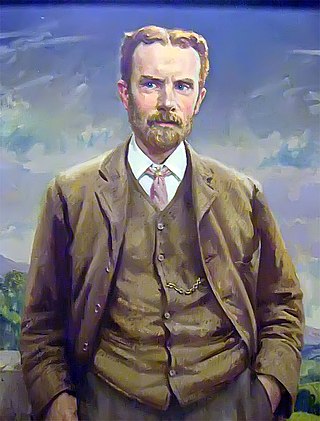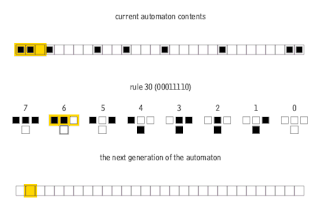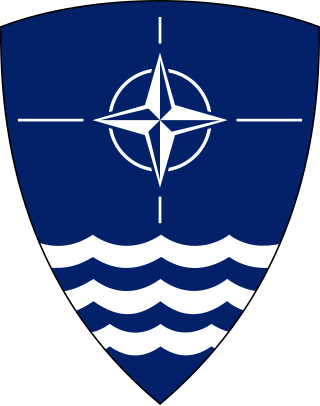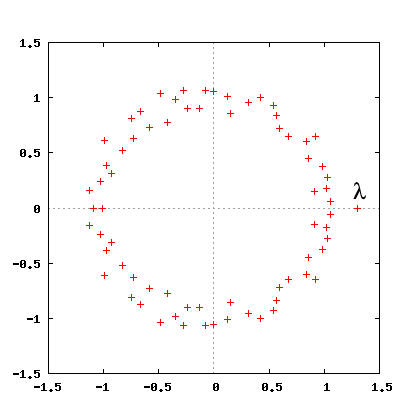
DVD-RAM is a DVD-based disc specification presented in 1996 by the DVD Forum, which specifies rewritable DVD-RAM media and the appropriate DVD writers. DVD-RAM media have been used in computers as well as camcorders and personal video recorders since 1998.
The NTRUEncrypt public key cryptosystem, also known as the NTRU encryption algorithm, is an NTRU lattice-based alternative to RSA and elliptic curve cryptography (ECC) and is based on the shortest vector problem in a lattice.

The Saab 18 was a twin-engine bomber and reconnaissance aircraft, designed and built by Svenska Aeroplan AB (SAAB) for use by the Swedish Air Force in response to a 1938 design competition. Due to delays, it did not enter service until 1944, but quickly became the standard Swedish bomber aircraft. Serving in the bomber, reconnaissance and ground-attack roles, it also assisted in the development of ejection seats and air-to-surface guided missiles until its replacement by the Saab Lansen in the late 1950s.

The World IBJJF Jiu-Jitsu Championship is a Brazilian jiu-jitsu tournament held annually by the International Brazilian Jiu-Jitsu Federation. It is widely considered the most important and prestigious jiu-jitsu tournament of the year.
Backhouse's constant is a mathematical constant named after Nigel Backhouse. Its value is approximately 1.456 074 948.

The Heaviside cover-up method, named after Oliver Heaviside, is a technique for quickly determining the coefficients when performing the partial-fraction expansion of a rational function in the case of linear factors.

In mathematics and computability theory, an elementary cellular automaton is a one-dimensional cellular automaton where there are two possible states and the rule to determine the state of a cell in the next generation depends only on the current state of the cell and its two immediate neighbors. There is an elementary cellular automaton which is capable of universal computation, and as such it is one of the simplest possible models of computation.

Allied Forces Baltic Approaches (BALTAP) was a Principal Subordinate Command (PSC) of the NATO Military Command Structure, with responsibility for the Baltic Sea area. It was in existence from 1962 to 2002 and consisted of the Danish Armed Forces, units of the West German Bundeswehr and allied wartime reinforcements.

Meril Prothom Alo Awards or Prothom Alo Awards is an annual Bangladeshi awards ceremony honouring cinematic achievements in Bangladeshi Film Industry. The awards are divided into two components, Viewers' Choice and Critics' Choice. The awards were first presented in 1998 and since then the awards are given every year at the Bangabandhu International Conference Center (BICC).

The 3rd Armoured Division was formed on 2 July 1956 in Hamburg and was one of the first major formations of the new German Army or Bundeswehr after the Second World War. The 3rd Armoured Division was stationed on the North German Plain between the rivers Elbe and Weser. Its last headquarters location was Buxtehude. It was part of the I Corps alongside the 1st Panzer, 7th Panzer, and 11th Panzergrenadier Divisions.
The Northern Army Group (NORTHAG) was a NATO military formation comprising five Army Corps from five NATO member nations. During the Cold War NORTHAG was NATO's forward defence in the Northern half of the Federal Republic of Germany (FRG). The Southern half of the Federal Republic of Germany was to be defended by the four Army Corps of NATO's Central Army Group (CENTAG). During wartime NORTHAG would command four frontline corps and one reserve corps. Air support was provided by Second Allied Tactical Air Force.
The Central Army Group (CENTAG) was a NATO military formation comprising four Army Corps from two NATO member nations comprising troops from Canada, West Germany and the United States. During the Cold War, CENTAG was NATO's forward defence in the southern half of the Federal Republic of Germany (FRG). The northern half of the FRG was defended by the four Army Corps of NATO's Northern Army Group (NORTHAG). During wartime, CENTAG would command four frontline corps. Air support was provided by Fourth Allied Tactical Air Force.

Fourth Allied Tactical Air Force was a NATO military formation under Allied Air Forces Central Europe tasked with providing air support to NATO's Central Army Group (CENTAG) in the southern portion of West Germany. 4 ATAF commanded all flying units based within its sector and all reinforcements flying into its sector, as well as ground-based radar systems and stations, air defense units and the airfields in its sector.
In mathematics, a polynomial decomposition expresses a polynomial f as the functional composition of polynomials g and h, where g and h have degree greater than 1; it is an algebraic functional decomposition. Algorithms are known for decomposing univariate polynomials in polynomial time.

The Hungarian Canoe Federation is the governing body of Canoe in Hungary. It organizes the Hungarian representation at international competitions and the Hungarian National Championships.
The following is a hierarchical outline for the Danish armed forces at the end of the Cold War. It is intended to convey the connections and relationships between units and formations. In wartime all Danish military units would have come under the joint West German/Danish NATO command Allied Forces Baltic Approaches (BALTAP). BALTAP was a principal subordinate command under the Allied Forces Northern Europe Command (AFNORTH). The commander-in-chief of (BALTAP) was always a Danish Lieutenant General or Vice Admiral, who had the designation Commander Allied Forces Baltic Approaches (COMBALTAP). In peacetime BALTAP had only a few communication units allocated and all other units remained under national command of West Germany's Bundeswehr and Denmark's Forsvaret.
This article lists the structure of the Royal Danish Army in 1989 and in May 2020:
In 1989, the United States Navy was on the verge of massive cuts to military spending cuts including ship and aircraft procurement. These forces were expected to fight the Soviet Union, Warsaw Pact and other potential adversaries in case of a war breaking out. At this time, the USS Kitty Hawk (CV-63) of the Pacific Fleet was out of commission for Service Life Extension Program (SLEP) modernization leaving the 3rd Fleet with less carriers.

Potentilla nivea, called the snow cinquefoil, snowy cinquefoil, and villous cinquefoil, is a species of flowering plant in the genus Potentilla, native to Subarctic Asia, North America, Greenland, and Europe, and the Subalpine Rockies and Alps. It comes in many ploidy levels; 2x, 3x, 4x, 5x, 6x, 7x, 8x and 10x.
In number theory, the real parts of the roots of unity are related to one-another by means of the minimal polynomial of The roots of the minimal polynomial are twice the real part of the roots of unity, where the real part of a root of unity is just with coprime with
















